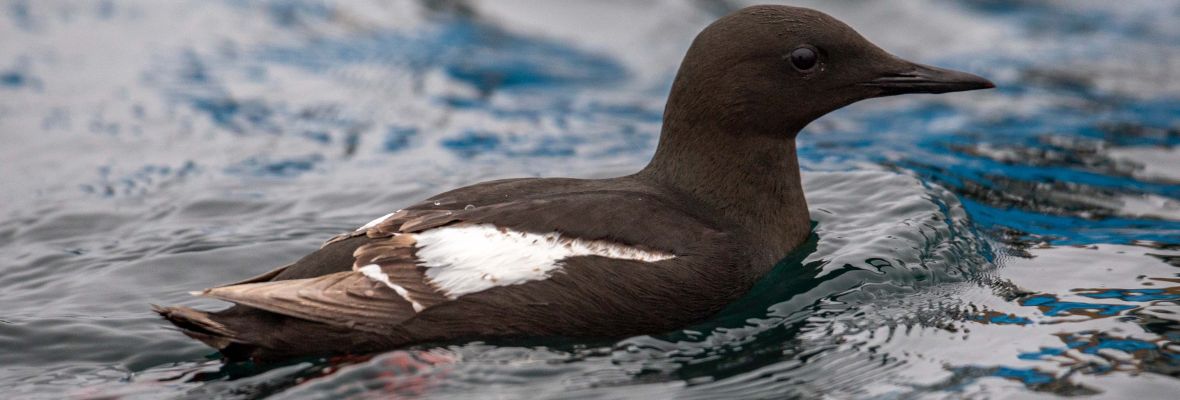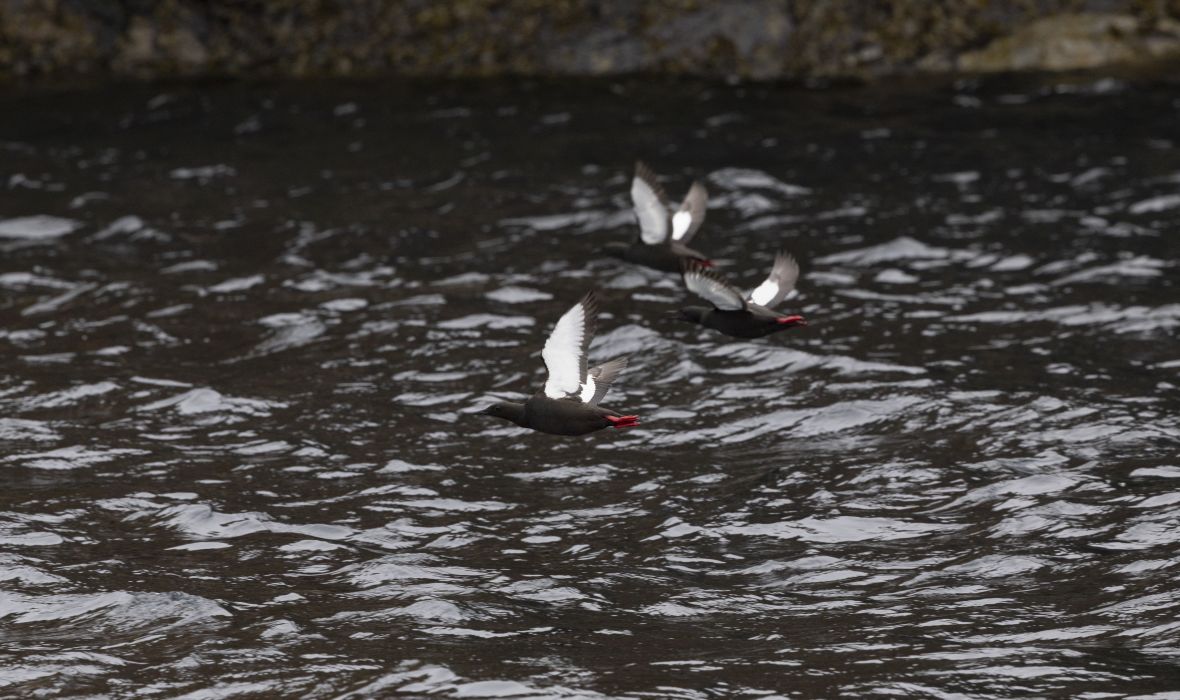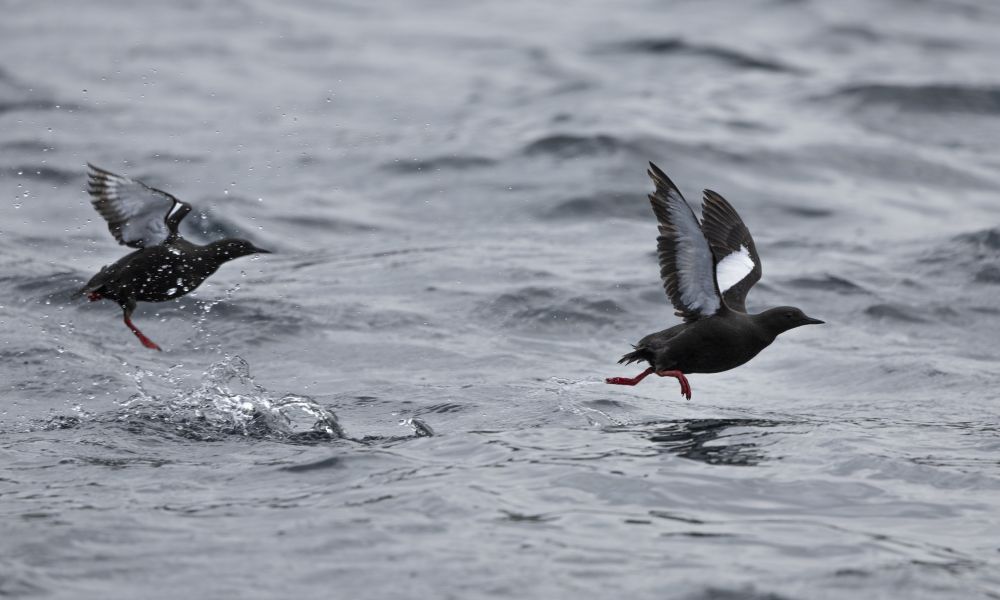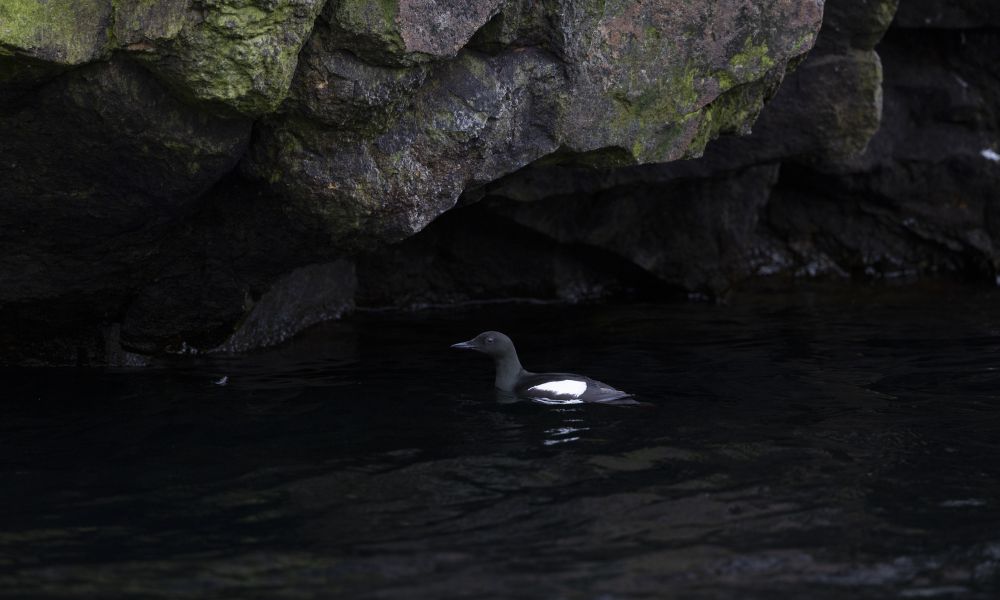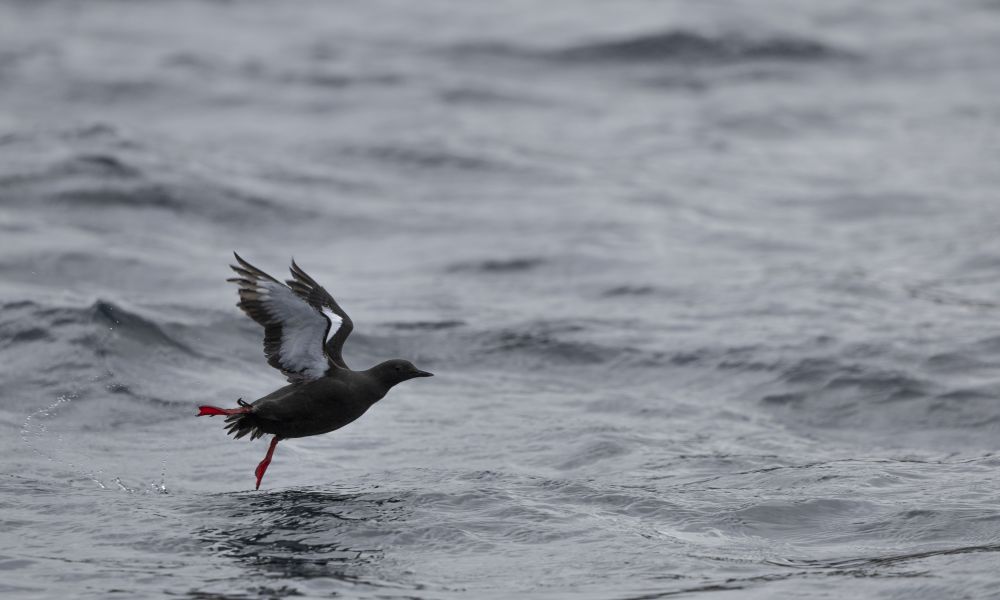Where Does the Black Guillemot Live?
They can be found along the coastal regions of the North Atlantic and the Arctic, including Canada, Greenland, Iceland, Svalbard, and northern Europe. Fortunately, all these destinations are part of our various expeditions, giving you the opportunity to see these birds in person when you join one of our ships!
What Does a Black Guillemot Look Like?
This sea bird has very distinctive features that are easily recognisable when spotted in the wild. They are the only auk (or alcid) in the North Atlantic with a completely black body, besides its black wings which feature a distinct white wing patch. Their legs and feet are bright red.
How Big Is a Black Guillemot?
Smaller than other guillemot species, such as the thick-billed murre and common murre, the black guillemot measures approximately 35 cm (13,7 in) in length, with a weight between 300-550 g (0.7-1.2 lbs). If you happen to see one flying during your expedition, take a moment to admire its tiny wings, which are about 50-60 cm (20-24 inches) long. It's a fascinating sight to behold!
What Do They Eat?
Their diet depends on the location and season, but it mainly consists of fish and crustaceans, which can also include molluscs and insects. For prey that is under the water, these black birds dive in to catch them, which is usually seafood found in shallow waters.



